This View Of Jupiter Shows The Giant Planet’s Cloud Tops Taken By The Pioneer 10 Spacecraft As It Flew
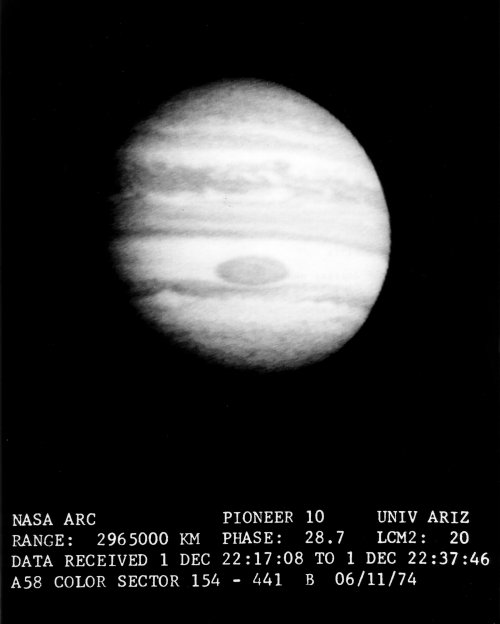
This view of Jupiter shows the giant planet’s cloud tops taken by the Pioneer 10 spacecraft as it flew past Jupiter. This view was taken from 2,695,000 kilometers (1,842,451 miles) away. It shows the 25,000 mile long Great Red Spot, which is large enough to swallow up several Earths. Individual cloud formations are visible in some detail. The bright zones appear to become split up into the detailed flow patterns of Jupiter’s atmosphere and clouds. The area surrounding the Spot in the bright South Tropical Zone, suggests a flow pattern about the Spot which is bulged toward the north by the Spot. The Spot may be a gigantic “permanent hurricane.” The gigantic cloud swirls are thousands or more miles across. Pioneer 10 flew past Jupiter in December 1974 and flew past the orbit of Pluto in 1987. A sister spacecraft, Pioneer 11 reached Jupiter in December 1975. The Pioneer Project was managed by NASA’s Ames Research Center, Mountain View, Calafornia. The spacecraft was built by TRW Systems.
More Posts from Astrotidbits-blog and Others
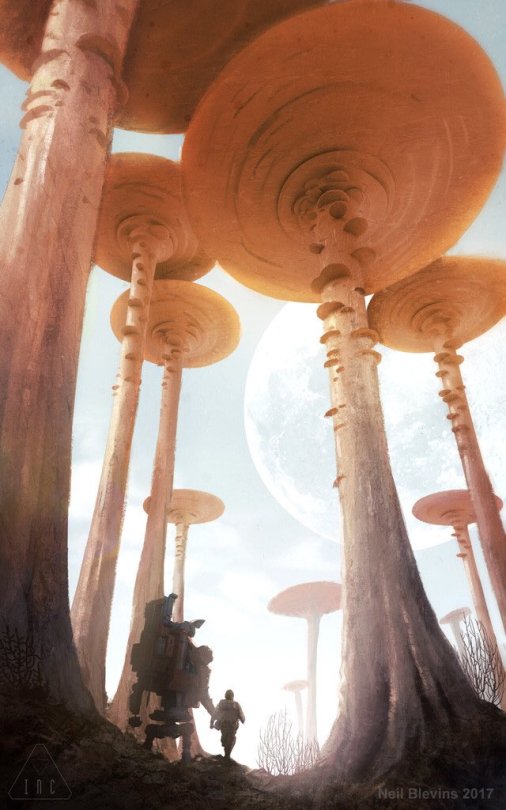
great concept art piece by Neil Blevins
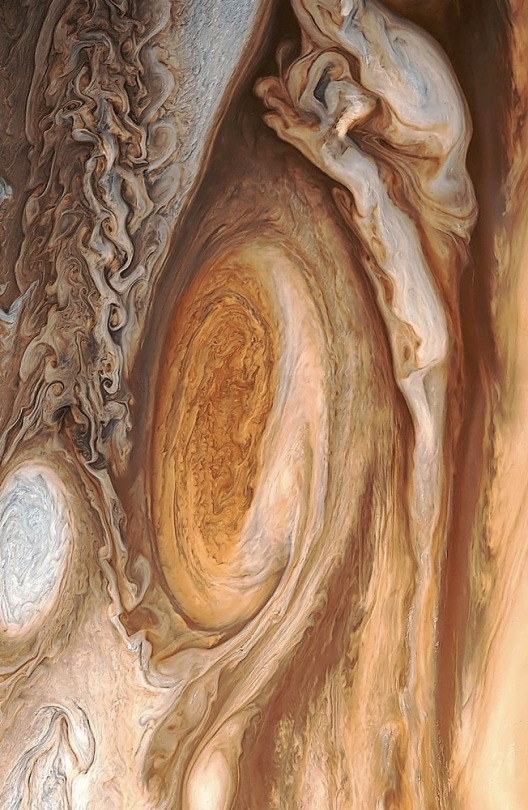
Great Red Spot of Jupiter
Jupiter and beyond the Infinite…
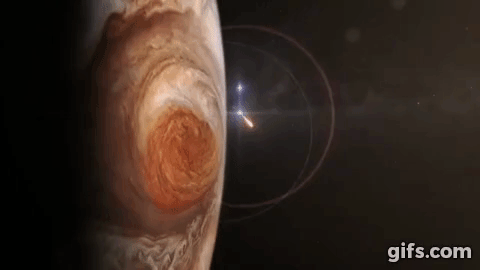
Infrared Jupiter looks hot as Juno spacecraft approaches
NASA’s mission to explore the Jovian system has almost reached its destination, and telescopes on Earth are capturing some especially fiery images of the planet to help.
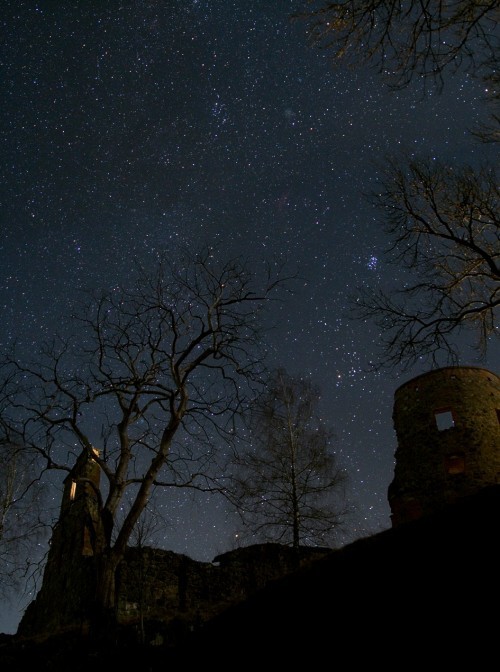
Starry Night Castle. Credit & Copyright: P-M Hedén
The Pleiades star cluster seems to lie just beyond the trees above a dark castle tower in this dramatic view. This starry sky also features bright star Aldebaran below the Pleiades and a small, faint, fuzzy cloud otherwise known as Comet Holmes near picture center at the top of the field. Starry Night Castle might be an appropriate name for the medieval castle ruin in the foreground. But its traditional name is Mörby Castle, found north of Stockholm, near lake Skedviken in Norrtälje, Sweden.

Ted Chin

Solar
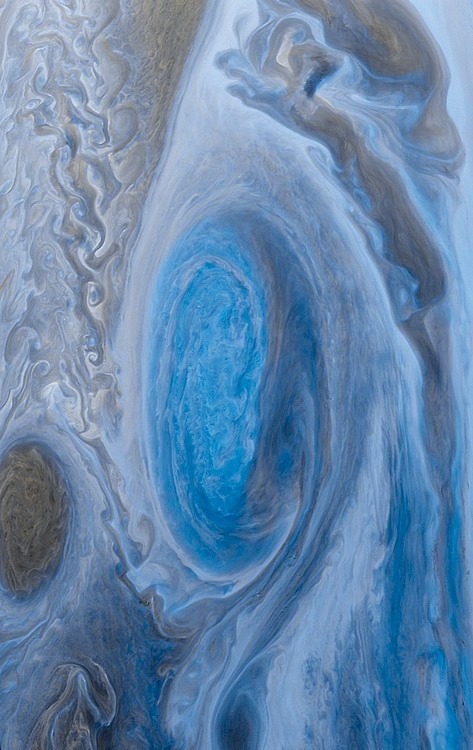
Jupiter’s Great Red Spot from Voyager 1 Color Inverted
What will become of Jupiter’s Great Red Spot? Recorded as shrinking since the 1930s, the rate of the Great Red Spot’s size appears to have accelerated just in the past few years. A hurricane larger than Earth, the Great Red Spot has been raging at least as long as telescopes could see it. Like most astronomical phenomena, the Great Red Spot was neither predicted nor immediately understood after its discovery. Although small eddies that feed into the storm system seem to play a role, a more full understanding of the gigantic storm cloud remains a topic of continued research, and may result in a better understanding of weather here on Earth. The above image is a digital enhancement of an image of Jupiter taken in 1979 by the Voyager 1 spacecraft as it zoomed by the Solar System’s largest planet. NASA’s Juno spacecraft is currently heading toward Jupiter and will arrive in 2016.
Image Credit: NASA, JPL; Digital processing: Björn Jónsson (IAAA), Color: thedemon-hauntedworld
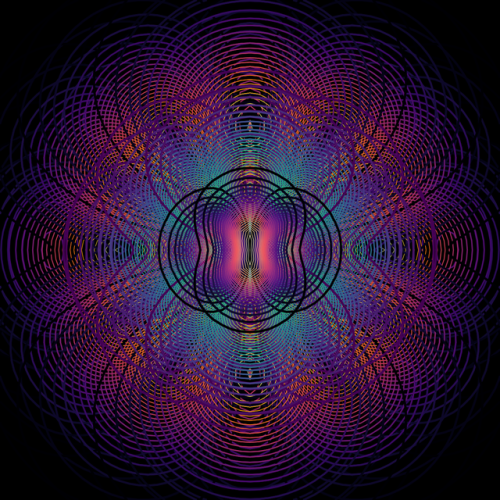
don’t assume the gender of my HYDROGEN! ok
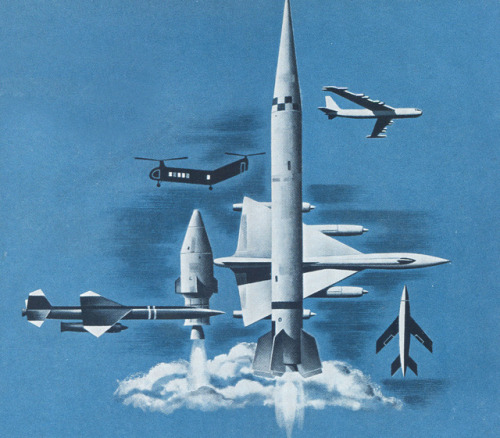
Aerospace Engineering Magazine April 1962
-
 hiphopissofakingdead liked this · 6 years ago
hiphopissofakingdead liked this · 6 years ago -
 socialswine118 liked this · 6 years ago
socialswine118 liked this · 6 years ago -
 dream-fighter reblogged this · 6 years ago
dream-fighter reblogged this · 6 years ago -
 yeetedtoanywherebuthere reblogged this · 7 years ago
yeetedtoanywherebuthere reblogged this · 7 years ago -
 yeetedtoanywherebuthere liked this · 7 years ago
yeetedtoanywherebuthere liked this · 7 years ago -
 babyhadle liked this · 7 years ago
babyhadle liked this · 7 years ago -
 astrotidbits-blog reblogged this · 8 years ago
astrotidbits-blog reblogged this · 8 years ago -
 astrotidbits-blog liked this · 8 years ago
astrotidbits-blog liked this · 8 years ago -
 shitstaincharlie-blog reblogged this · 8 years ago
shitstaincharlie-blog reblogged this · 8 years ago -
 shitstaincharlie-blog liked this · 8 years ago
shitstaincharlie-blog liked this · 8 years ago -
 volbeast reblogged this · 8 years ago
volbeast reblogged this · 8 years ago -
 volbeast liked this · 8 years ago
volbeast liked this · 8 years ago -
 alyxeris reblogged this · 8 years ago
alyxeris reblogged this · 8 years ago -
 blackoutr liked this · 8 years ago
blackoutr liked this · 8 years ago -
 the-sea-of-immeasurable-loss reblogged this · 8 years ago
the-sea-of-immeasurable-loss reblogged this · 8 years ago -
 the-sea-of-immeasurable-loss liked this · 8 years ago
the-sea-of-immeasurable-loss liked this · 8 years ago -
 atticgoth reblogged this · 8 years ago
atticgoth reblogged this · 8 years ago -
 atticgoth liked this · 8 years ago
atticgoth liked this · 8 years ago -
 alyxeris liked this · 8 years ago
alyxeris liked this · 8 years ago -
 satanic-rituals reblogged this · 8 years ago
satanic-rituals reblogged this · 8 years ago -
 the-wildling-queen reblogged this · 8 years ago
the-wildling-queen reblogged this · 8 years ago -
 kb-p2730 liked this · 8 years ago
kb-p2730 liked this · 8 years ago -
 for-lucifers-praise reblogged this · 8 years ago
for-lucifers-praise reblogged this · 8 years ago -
 cognitivelyadvancedzygote liked this · 9 years ago
cognitivelyadvancedzygote liked this · 9 years ago -
 alphaceti69-blog liked this · 9 years ago
alphaceti69-blog liked this · 9 years ago -
 snoupejl reblogged this · 9 years ago
snoupejl reblogged this · 9 years ago -
 snoupejl liked this · 9 years ago
snoupejl liked this · 9 years ago -
 galaxypachinko liked this · 9 years ago
galaxypachinko liked this · 9 years ago -
 avatar-mom liked this · 9 years ago
avatar-mom liked this · 9 years ago -
 skoryy liked this · 9 years ago
skoryy liked this · 9 years ago -
 magnetic-terp-input reblogged this · 9 years ago
magnetic-terp-input reblogged this · 9 years ago -
 wanderingsofal liked this · 9 years ago
wanderingsofal liked this · 9 years ago -
 thatoneswimmercarl liked this · 9 years ago
thatoneswimmercarl liked this · 9 years ago -
 kittiekiwi52 liked this · 9 years ago
kittiekiwi52 liked this · 9 years ago -
 iycrmm liked this · 9 years ago
iycrmm liked this · 9 years ago -
 aorangejuiceterminator liked this · 9 years ago
aorangejuiceterminator liked this · 9 years ago -
 starhasarrived liked this · 9 years ago
starhasarrived liked this · 9 years ago